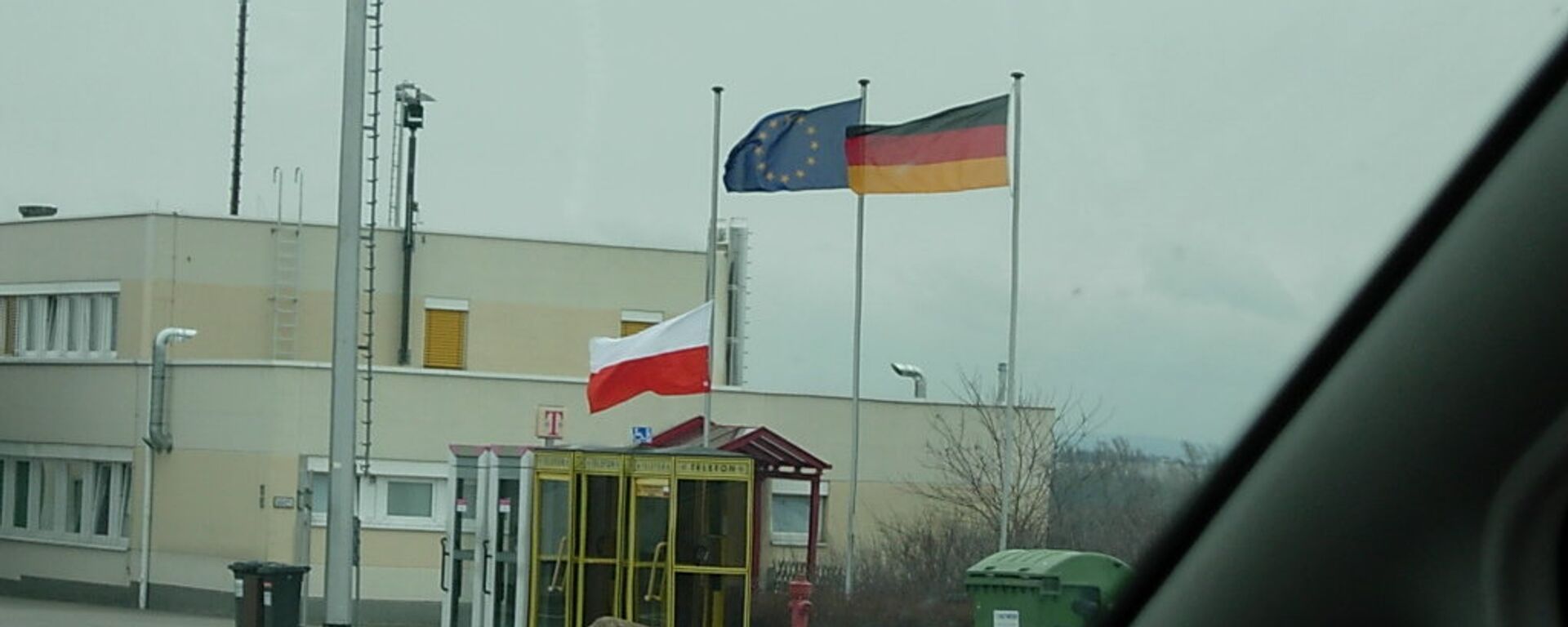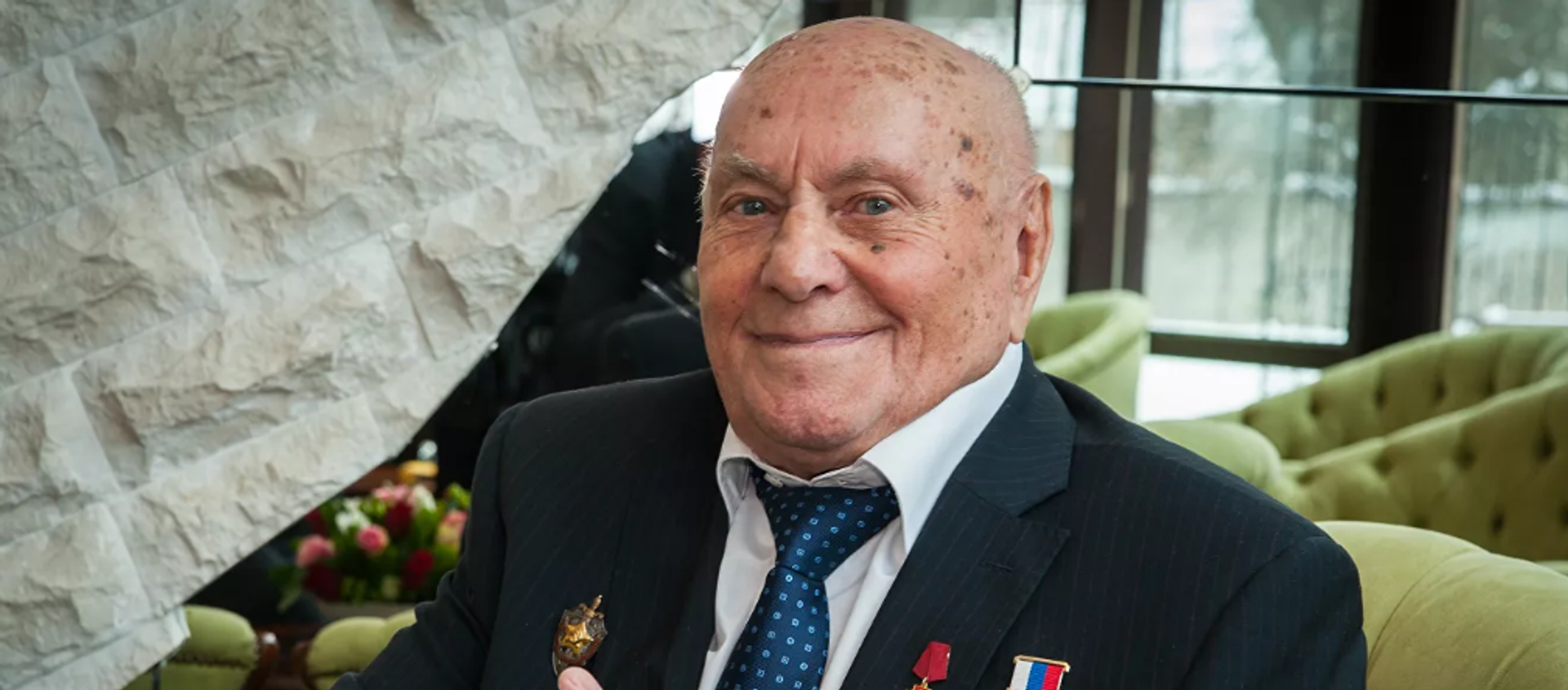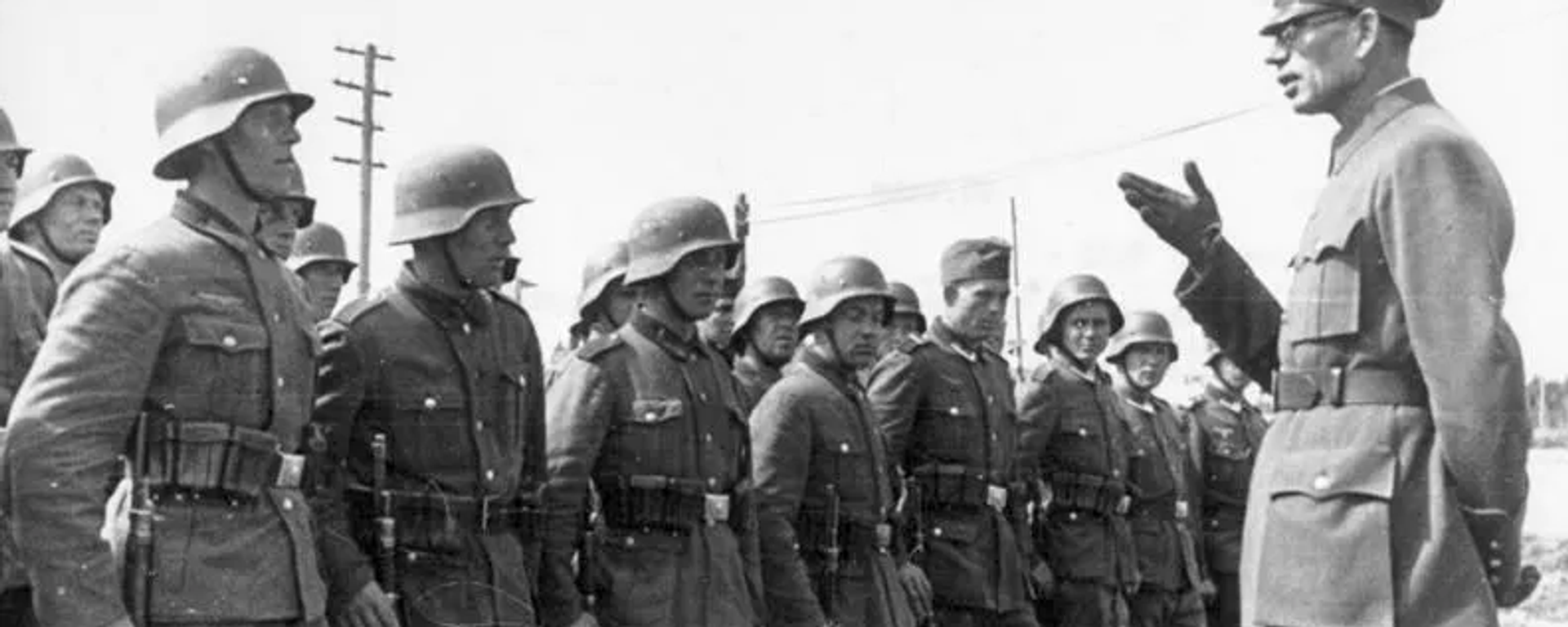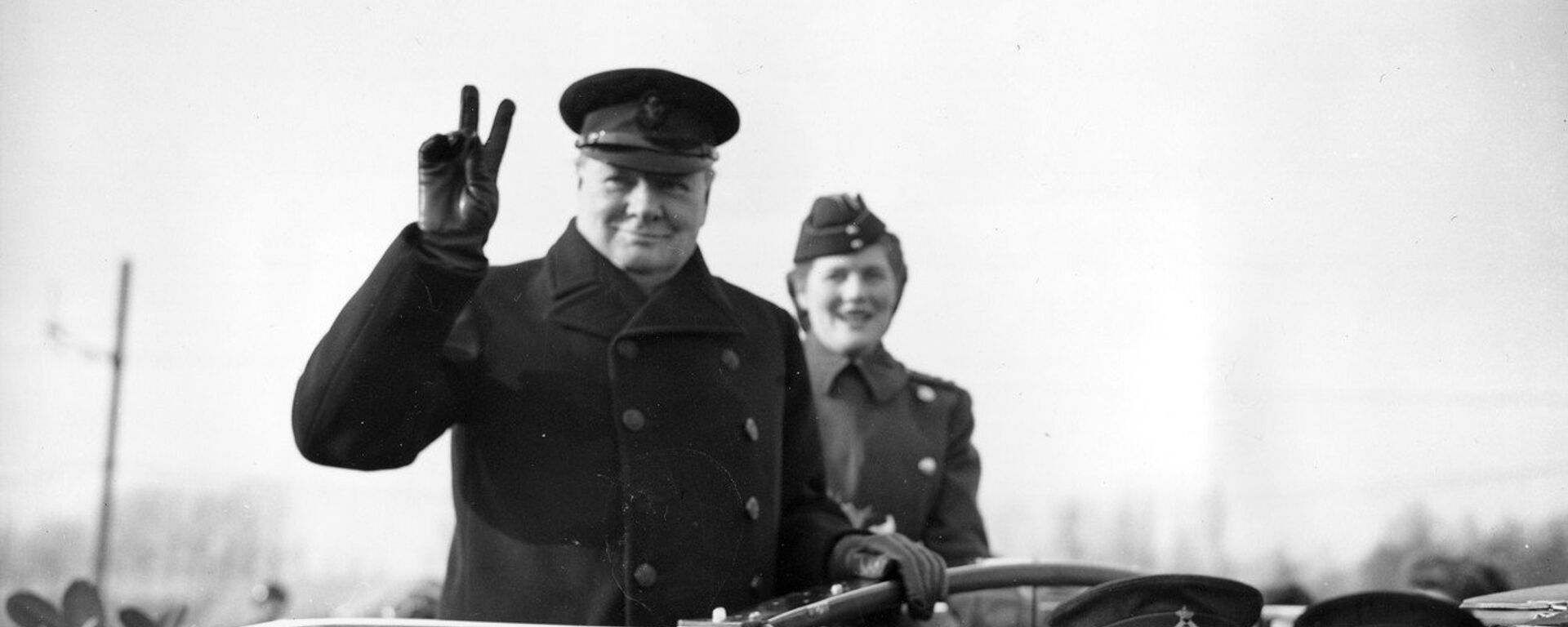https://sputnikglobe.com/20220917/russias-fsb-declassifies-docs-on-polish-guerrillas-war-crimes-against-own-countrymen-during-wwii-1100900941.html
Russia’s FSB Declassifies Docs on Polish Guerrillas’ War Crimes Against Own Countrymen During WWII
Russia’s FSB Declassifies Docs on Polish Guerrillas’ War Crimes Against Own Countrymen During WWII
Sputnik International
The document dump comes amid fresh threats by Warsaw this week to demand “reparations” from Moscow for the Soviet Union’s actions during World War II. Russian... 17.09.2022, Sputnik International
2022-09-17T14:33+0000
2022-09-17T14:33+0000
2023-05-07T18:35+0000
poland
soviet union
world war ii
russia
https://cdn1.img.sputnikglobe.com/img/07e6/09/11/1100900696_0:45:980:596_1920x0_80_0_0_c6a0236744e5b543768319ff91df9adb.jpg
The Federal Security Service (Russian acronym FSB), Russia’s main domestic security agency, has declassified a pair of Soviet intelligence reports by senior officials from SMERSH, the Red Army’s umbrella counterintelligence and counterterrorism organization, documenting crimes carried out by the Polish Home Army against their own countrymen, and against Soviet troops and civilian administrators during the Second World War.Sputnik was able to familiarize itself with the documents.The Home Army (Armia Krajowa, or AK) was a massive underground resistance forced formed in Nazi-occupied Poland in early 1942, and consisted of between 350,000-380,000 partisans and their supporters. Along with the Polish People’s Army, the Soviet-backed force created in the spring of 1943, the Home Army was one of the two major domestic forces that fought to free the country from the Nazis.However, unlike the People’s Army, the Home Army’s goals weren’t limited to fighting Germany. The declassified reports document how elements of the nationalist guerrilla movement also spent a considerable portion of its focus and energy fighting Soviet partisans and Red Army formations in western Ukraine and Belarus, terrorizing Polish civilians who expressed sympathy for the USSR, People’s Army troops, as well as Lithuanian and Ukrainian nationalist formations.Goal: Creating ‘Great Poland’The first of the documents is a classified report on the Home Army dated September 14, 1944 by Lieutenant General Pavel Zelenin, head of the SMERSH detachment attached to the 3rd Belarusian Front, addressed to SMERSH chief Viktor Abakumov and front commander General Ivan Chernyakhovsky.The primer explained that the Armia Krajowa was not an army in the traditional sense, but an association of underground armed detachments controlled from London by the Polish government in exile which included sabotage-terrorist and reconnaissance structures.“After the entry of the Red Army on the territory of Lithuania and western Belarus, Home Army units were given the task of concentrating in the area of Vilnius and Avgustow, conserving their manpower, arming themselves and then striking into the rear of the Red Army,” the report said.The document features the testimony of several captured Home Army fighters who explain the guerrilla force's main operational and strategic goals.Heinrich Kivnick, a local Home Army fighter questioned by SMERSH, confirmed to Soviet counterintelligence during his interrogation that the guerrilla group’s goal was to “fight for the creation of an independent Polish government – Great Poland.”Those interviewed were also asked about specifics of the London-based Polish government’s instructions to the Home Army, with captured Home Army lieutenant Georgiy Ruschits saying the only instruction was to prepare to restore Great Poland, including with the aid of an ideological campaign of sowing hatred for the USSR among partisans and civilians.Campaign of TerrorThrough the testimonies of captured Home Army fighters and civilian eye witnesses, Zelenin established that the guerrillas “waged an armed struggle against Soviet partisans, killed all Soviet citizens who arrived in western Belarus after its reunification with the Belarusian Soviet Socialist Republic, and also killed Orthodox Poles among the local population who expressed pro-Soviet inclinations.”“In June 1944…in the village of Raubishki, ethnic Pole Trusevich was killed because his daughter was a member of the Komsomol [a Soviet political youth organization],” a captured Home Army fighter told SMERSH.The report indicated that the Home Army’s command barred fighters from joining the ranks of Polish People’s Army forces commander General Zygmunt Berling, smearing him as a “turncoat and a traitor.” Berling's actions on the front disprove these allegations. In the fall of 1944 during the Warsaw Uprising, he commanded pro-Soviet forces in a desperate bid to establish a bridgehead on the west bank of the Vistula River to meet up with resistance fighters who had risen up in the city, including elements of the Home Army.In a separate report from late November 1944, Belarusian Internal Affairs chief Sergei Belchenko and NKVD chief Lavrenty Tsanava reported to Minsk that a total of 266 Polish Home Army formations had been liquidated in western Belarus, and several thousand arrests made after a campaign of terror against the civilian population left about 80 locals dead following the region's liberation by the Red Army.735 fighters were killed during armed clashes with NKVD units, and about 1,200 rifles, 500 machine guns, 15 mortars, 500 mines and 35.5 kilograms of explosives were seized, according to the report.Saturday marks the 83rd anniversary of the September 17, 1939 entry of Soviet forces into areas of western Ukraine and western Belarus (at that time part of Poland), with the operation kicking off after the Polish government fled to Romania following the Nazi invasion from the west. The USSR characterized the operation as the liberation of Ukrainian and Belarusian lands lost during the Polish-Soviet War of 1919-1921, and troops were forbidden from shelling local settlements or conducting military operations against local Polish formations unless the latter showed resistance.During the Red Army’s counteroffensive operations of 1944 and 1945, over 600,000 soldiers laid down their lives to liberate Poland. During the campaign, 200,000 Poles joined the ranks of the Polish People’s Army, and tens of thousands perished in fierce fighting for their home country and in eastern Germany during the closing months of the war. The Red Army and the Polish People’s Army jointly fought the Nazis to Berlin, and Polish forces hoisted a Polish flag over the ruins of the Reichstag in May 1945 alongside their Soviet counterparts.Since the collapse of communism in Poland, veterans of the Polish People’s Army have faced various forms of discrimination, including low pensions, the rewriting of history books to downplay their role in freeing the country from the Nazis, and the demolition of monuments showing People’s Army servicemen alongside Red Army troops.
https://sputnikglobe.com/20220916/polish-media-accuses-berlin-of-seeking-to-revise-border-amid-warsaws-wwii-reparations-demands-1100861555.html
https://sputnikglobe.com/20200213/soviet-intelligence-officer-who-helped-save-polands-krakow-during-wwii-dead-at-103-1078307756.html
https://sputnikglobe.com/20201207/general-andrei-vlasov-how-highest-ranking-soviet-defector-collaborated-with-the-nazis-1081376111.html
https://sputnikglobe.com/20200522/revealed-why-churchill-considered-operation-unthinkable-surprise-attack-on-moscow-in-1945-1079391874.html
poland
soviet union
Sputnik International
feedback@sputniknews.com
+74956456601
MIA „Rosiya Segodnya“
2022
News
en_EN
Sputnik International
feedback@sputniknews.com
+74956456601
MIA „Rosiya Segodnya“
Sputnik International
feedback@sputniknews.com
+74956456601
MIA „Rosiya Segodnya“
poland, soviet union, world war ii
poland, soviet union, world war ii
Russia’s FSB Declassifies Docs on Polish Guerrillas’ War Crimes Against Own Countrymen During WWII
14:33 GMT 17.09.2022 (Updated: 18:35 GMT 07.05.2023) The document dump comes amid fresh threats by Warsaw this week to demand “reparations” from Moscow for the Soviet Union’s actions during World War II. Russian officials preemptively dismissed the demands, pointing out that there wouldn’t be a modern Polish state if not for the 600,000+ Red Army soldiers who died liberating Poland from the Nazis.
The Federal Security Service (Russian acronym FSB), Russia’s main domestic security agency, has declassified a pair of Soviet intelligence reports by senior officials from SMERSH, the Red Army’s umbrella counterintelligence and counterterrorism organization, documenting crimes carried out by the Polish Home Army against their own countrymen, and against Soviet troops and civilian administrators during the Second World War.
Sputnik was able to familiarize itself with the documents.
The Home Army (Armia Krajowa, or AK) was a massive underground resistance forced formed in Nazi-occupied Poland in early 1942, and consisted of between 350,000-380,000 partisans and their supporters. Along with the Polish People’s Army, the Soviet-backed force created in the spring of 1943, the Home Army was one of the two major domestic forces that fought to free the country from the Nazis.
However, unlike the People’s Army, the Home Army’s goals weren’t limited to fighting Germany. The declassified reports document how elements of the nationalist guerrilla movement also spent a considerable portion of its focus and energy fighting Soviet partisans and Red Army formations in western Ukraine and Belarus, terrorizing Polish civilians who expressed sympathy for the USSR, People’s Army troops, as well as Lithuanian and Ukrainian nationalist formations.

16 September 2022, 12:55 GMT
Goal: Creating ‘Great Poland’
The first of the documents is a classified report on the Home Army dated September 14, 1944 by Lieutenant General Pavel Zelenin, head of the SMERSH detachment attached to the 3rd Belarusian Front, addressed to SMERSH chief Viktor Abakumov and front commander General Ivan Chernyakhovsky.
The primer explained that the Armia Krajowa was not an army in the traditional sense, but an association of underground armed detachments controlled from London by the Polish government in exile which included sabotage-terrorist and reconnaissance structures.
“After the entry of the Red Army on the territory of Lithuania and western Belarus, Home Army units were given the task of concentrating in the area of Vilnius and Avgustow, conserving their manpower, arming themselves and then striking into the rear of the Red Army,” the report said.
The document features the testimony of several captured Home Army fighters who explain the guerrilla force's main operational and strategic goals.
Heinrich Kivnick, a local Home Army fighter questioned by SMERSH, confirmed to Soviet counterintelligence during his interrogation that the guerrilla group’s goal was to “fight for the creation of an independent Polish government – Great Poland.”
“Stankevich (one of the leaders of the Polish underground committee in Vilnius) told us that after the liberation of Polish territory from the Red Army, we will create an independent Polish national state and annex western Ukraine and Belarus. Stankevich said that if the Soviet Union does not make concessions peacefully, we will declare war on the USSR, defeat it and attach these lands to Great Poland,” Kivnick said.
Those interviewed were also asked about specifics of the London-based Polish government’s instructions to the Home Army, with captured Home Army lieutenant Georgiy Ruschits saying the only instruction was to prepare to restore Great Poland, including with the aid of an ideological campaign of sowing hatred for the USSR among partisans and civilians.

13 February 2020, 18:46 GMT
Through the testimonies of captured Home Army fighters and civilian eye witnesses, Zelenin established that the guerrillas “waged an armed struggle against Soviet partisans, killed all Soviet citizens who arrived in western Belarus after its reunification with the Belarusian Soviet Socialist Republic, and also killed Orthodox Poles among the local population who expressed pro-Soviet inclinations.”
“In December 1943, in the area of the village of Sabolontse [sic], a Polish formation attacked Soviet partisans, killing four. In January 1944, a detachment of Polish legionnaires took nine Soviet partisans prisoner and executed them,” the document said, citing the testimony of a Polish eyewitness.
“In June 1944…in the village of Raubishki, ethnic Pole Trusevich was killed because his daughter was a member of the Komsomol [a Soviet political youth organization],” a captured Home Army fighter told SMERSH.
Also in June of 1944, another Polish eyewitness informed SMERSH of the Home Army fighters’ murder of officials from the Lyavuta and Paradun village councils. The report further noted that on August 14, after the arrival of the Red Army in the area, two more members of the Paradun village council were killed by the guerrillas.
The report indicated that the Home Army’s command barred fighters from joining the ranks of Polish People’s Army forces commander General Zygmunt Berling, smearing him as a “turncoat and a traitor.” Berling's actions on the front disprove these allegations. In the fall of 1944 during the Warsaw Uprising, he commanded pro-Soviet forces in a desperate bid to establish a bridgehead on the west bank of the Vistula River to meet up with resistance fighters who had risen up in the city, including elements of the Home Army.
In a separate report from late November 1944, Belarusian Internal Affairs chief Sergei Belchenko and NKVD chief Lavrenty Tsanava reported to Minsk that a total of 266 Polish Home Army formations had been liquidated in western Belarus, and several thousand arrests made after a campaign of terror against the civilian population left about 80 locals dead following the region's liberation by the Red Army.
735 fighters were killed during armed clashes with NKVD units, and about 1,200 rifles, 500 machine guns, 15 mortars, 500 mines and 35.5 kilograms of explosives were seized, according to the report.

7 December 2020, 05:00 GMT
Saturday marks the 83rd anniversary of the September 17, 1939 entry of Soviet forces into areas of western Ukraine and western Belarus (at that time part of Poland), with the operation kicking off after the Polish government fled to Romania following the Nazi invasion from the west. The USSR characterized the operation as the liberation of Ukrainian and Belarusian lands lost during the Polish-Soviet War of 1919-1921, and troops were forbidden from shelling local settlements or conducting military operations against local Polish formations unless the latter showed resistance.
During the Red Army’s counteroffensive operations of 1944 and 1945, over 600,000 soldiers laid down their lives to liberate Poland. During the campaign, 200,000 Poles joined the ranks of the Polish People’s Army, and tens of thousands perished in fierce fighting for their home country and in eastern Germany during the closing months of the war. The Red Army and the Polish People’s Army jointly fought the Nazis to Berlin, and Polish forces hoisted a Polish flag over the ruins of the Reichstag in May 1945 alongside their Soviet counterparts.
Since the collapse of communism in Poland, veterans of the Polish People’s Army have faced various forms of discrimination, including low pensions, the rewriting of history books to downplay their role in freeing the country from the Nazis, and
the demolition of monuments showing People’s Army servicemen alongside Red Army troops.








